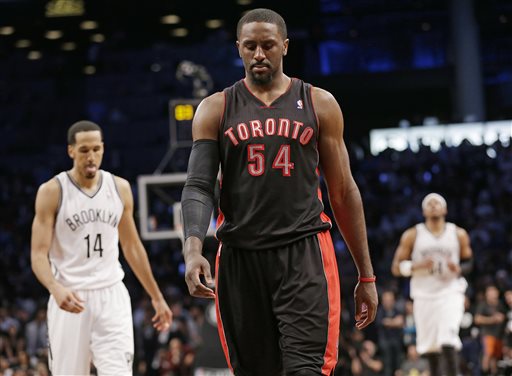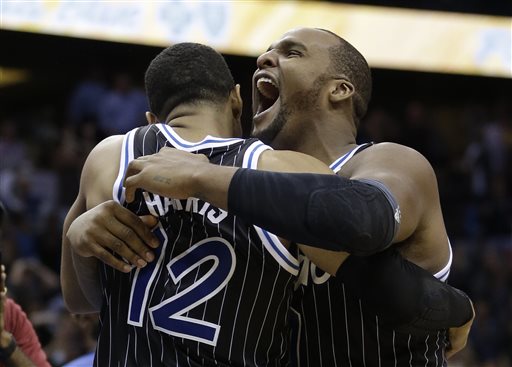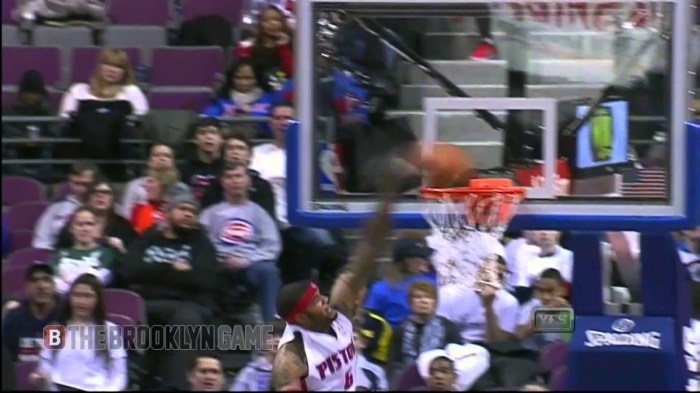
Before the series, I listed Nets 6’9″ forward Mirza Teletovic as the Nets’ X-Factor, because his ability to space the floor and hit three-pointers when his teammates drew in defenses could potentially swing a game or two in a best-of-seven series.
But through the first three games, it looks like 6’9″ forward Patrick Patterson has filled that role for Toronto more than the Teletovic has for Brooklyn.
Nets fans may remember Patterson unkindly from earlier this season: on January 27th, with the Nets up 103-102 and 12 seconds remaining, Patterson intercepted a Deron Williams inbounds pass in the backcourt and hit the game-winning jumper six seconds later. Though he’s imposed his will in different ways in the playoffs, he’s still made a real impact.
Through three playoff games, Patterson has scored nearly a point every two minutes, hit five of nine three-pointers, and shot 62.5 percent from the field overall. It’s no fluke: Patterson shot a career-best 41.1 percent from three-point range with Toronto this season, with over 40 percent of those attempts coming from the highly valuable corners.
The Nets bench has been a strength all season, and they frequently laud their depth as a difference-maker. But in this series, Patterson’s been the top bench player on either side, averaging more points per game (12.3) than any non-starter on either team, and more rebounds per game (6.3) than any Nets player, period.
“Patrick brings so much to the table,” Raptors coach Dwane Casey said. “His physicality, his intensity, he can knock down shots. … We needed to be able to stretch the floor out because they’re playing small. That small-ball gives them a little bit of an advantage, but with Patrick, one thing it does is allow us to really crash the boards.”
Spotting up around Toronto’s dribble-creators is Patterson’s bread-and-butter. When the Nets bring a double-team to the man with the ball on Patterson’s side, Patterson’s high release and size make it difficult for the Nets to cleanly contest his shot. He hit two three-pointers in just this fashion down the stretch in Game 3, as the Raptors cut a 15-point lead to one. His last three-pointer came right in front of the Nets bench, and he gave Jason Kidd a little stare after hitting it.
Patterson is Toronto’s best counter-punch to Brooklyn playing Paul Pierce at power forward. Pierce allows the Nets an additional long-range shooter and someone that can drive to the basket. But Patterson gives Toronto the same spacing without losing the size advantage.
The Nets can’t change their game now: they’ve gotten their success from playing their small/long hybrid lineups. But this puts an onus on Brooklyn’s backcourt to do a better job containing Toronto’s dribble-drive threats. If the Nets don’t need to help off Patterson, he’ll get fewer open looks. If they do, they could leave tonight with a tied series heading back to Toronto for Game 5.


















